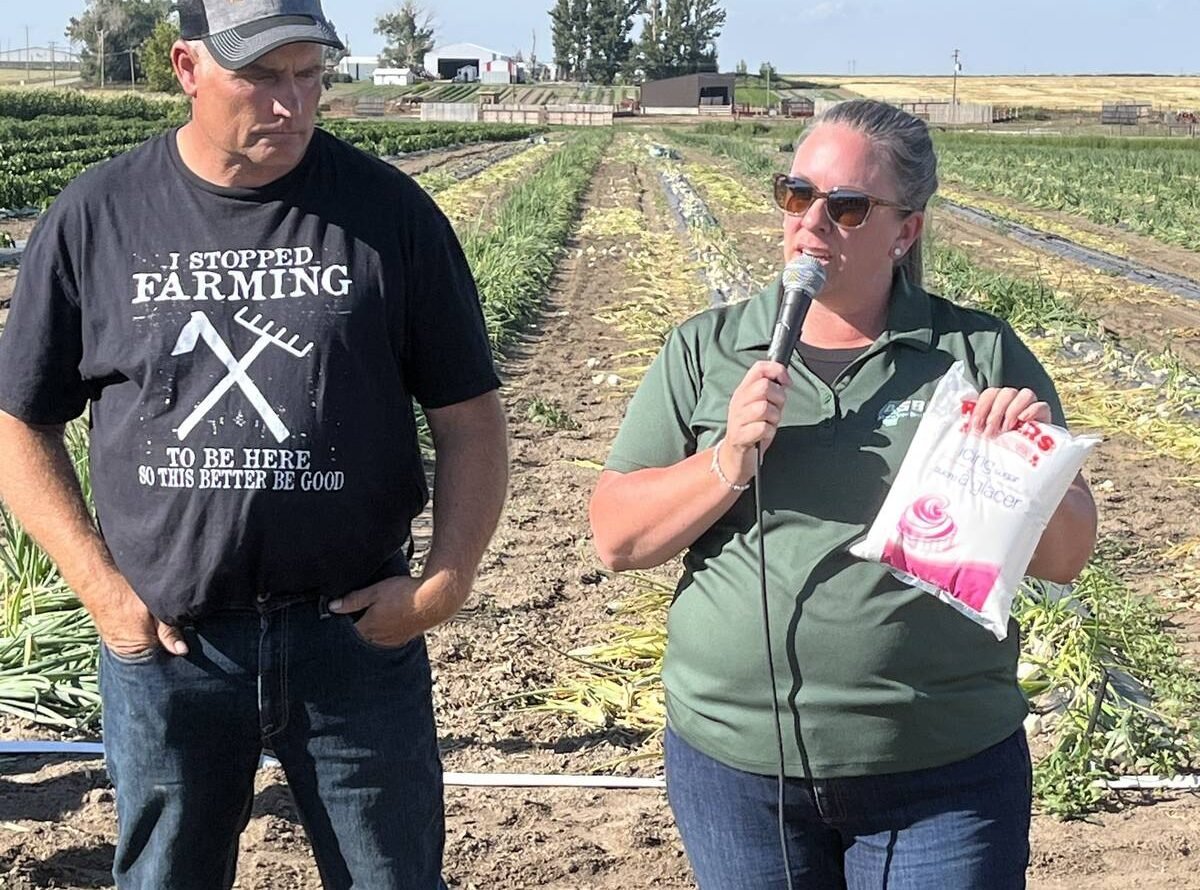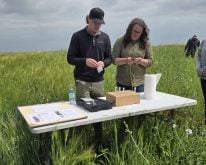With the help of prairie farmers, University of Saskatchewan researchers are hoping hazelnuts will soon be as popular in gardens as saskatoons and sour cherries.
As part of a quest to find the perfect hazelnut tree, Saskatoon researchers are selling hazelnut seedlings to growers across the Prairies for $3.
Research technician Rick Sawatzky, said that with little funding available for hazelnut research, researchers are enlisting farmers to grow and record information on the trees.
With farmers’ co-operation, the chances of finding a prairie hardy hazelnut tree will increase dramatically.
Read Also

Alberta’s beets a sweet domestic segment in Canada’s sugar supply
The sugar beet industry is showcased during a Farm to Table tour, as Taber features the last remaining sugar beet processing plant in all of Canada.
“We realize we don’t have the money and resources ourselves. It was obvious we needed help,” said Sawatzky.
“We’re at the stage now we need to grow the numbers.”
Unlike cloned plants bought at the nursery, the hazelnut trees bought through the hazelnut project are highly variable.
Because of their mixed lineage, about one quarter of the trees should be very hardy, half should be reasonably hardy and the rest are expected to perform poorly.
They also expect one quarter to have large nuts, half to have average size nuts and one quarter to be puny. The chance of finding large nuts on hardy bushes is one in 16.
“It’s like trying to win the lottery,” said Sawatzky.
During the 1940s, Les Kerr of the Forestry Farm in Saskatoon crossed wild American hazelnuts with cultivated European hazelnuts and bred them until the early 1980s when the University of Saskatchewan took over the breeding program.
Sawatzky started crossing the better hazelnut plants with pollen from Oregon State University and the seedlings for sale are the best hybrids from those crosses.
It takes five to seven years for the hazelnut trees to start producing fruit and Sawatzky doesn’t expect to find the perfect hazelnut tree for 10 to 20 years.
Once the trees begin to bear fruit and a plant looks promising, the researchers want to collect cuttings and possibly germinate nuts from the best of the trees planted across the Prairies. The best of those plants will be cloned and redistributed to co-operators.
Hazelnut trees do well on marginal soil. They grow to a height of three or four metres and can be as wide as they are tall. The ideal tree would be able to fit under commercial fruit harvesters.
In exchange for supplying the best material back to the researchers, farmers are encouraged to use their entrepreneurial skills to develop markets for the nuts or keep them for their own use.
“We want them to be creative and tap into their creativity and business savvy,” said Sawatzky.
Once Sawatzky has created excite-ment around the hazelnut project, its assistant Peter Reimer’s job to discourage producers from ordering the plants because of their extreme genetic variability.
“I do everything to sound discouraging to buyers,” he said. “It’s an extremely long-term project.”
Despite the expected difficulties with the plants, the plant sciences department has sold all its seedlings since it started the project in 2007.
Heather Dickau, horticulturist for the counties of Wetaskiwin and Leduc, just south of Edmonton, ordered 25 trees this year as part of her experiment to look for trees that will grow in different climate conditions.
Dickau plans to plant the seedlings as part of a small nursery where she will plant other fruit trees and use the trees for grafting and pruning demonstrations.
“It was a small investment. If it’s not successful, it’s not a big loss.”
Rick Letwinka of Craven, Sask., ordered 50 hazelnut trees in hopes of finding a tree that will produce a decent size hazelnut.
As a market gardener and vegetarian, Letwinka is always searching for new sources of protein that will grow on his southern Saskatchewan farm.
He also wants to do his part in helping the researchers develop varieties of fruit and nut trees that can be successfully grown on the Prairies.
“I see the caliber of work the breeders do to increase fruit production on the Prairies. I think it’s great to help them and be part of the process,” he said.
“I’m excited about hazelnuts,” said Letwinka, who plans to plant the seedlings on two separate plots of land in the Qu’Appelle River valley.
The microclimate in the valley may be perfect for hazelnut tree growth. He is already successfully growing cherries, apple trees and artichoke plants.
Marvin Tkachuk of Spruce Grove, Alta., ordered trees as part of his personal quest to push the limits of the growing area.
“I am interested in trying to see if I can grow nuts in a northern climate. It’s a personal fascination,” said Tkachuk, who already successfully grows six varieties of grapes, blueberries and Siberian walnuts at his farm west of Edmonton.
“There is the odd chance to get something that is commercially viable.”














